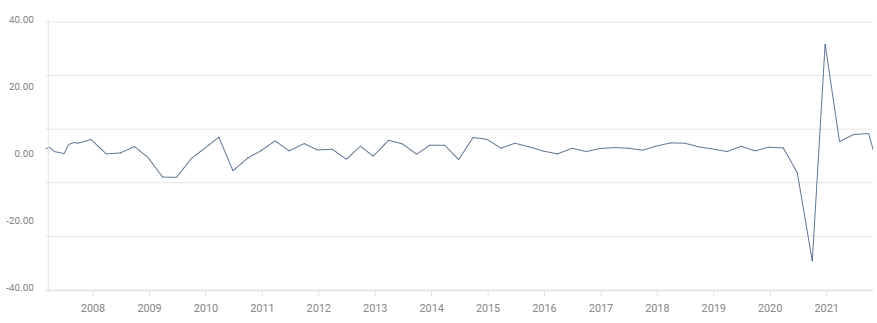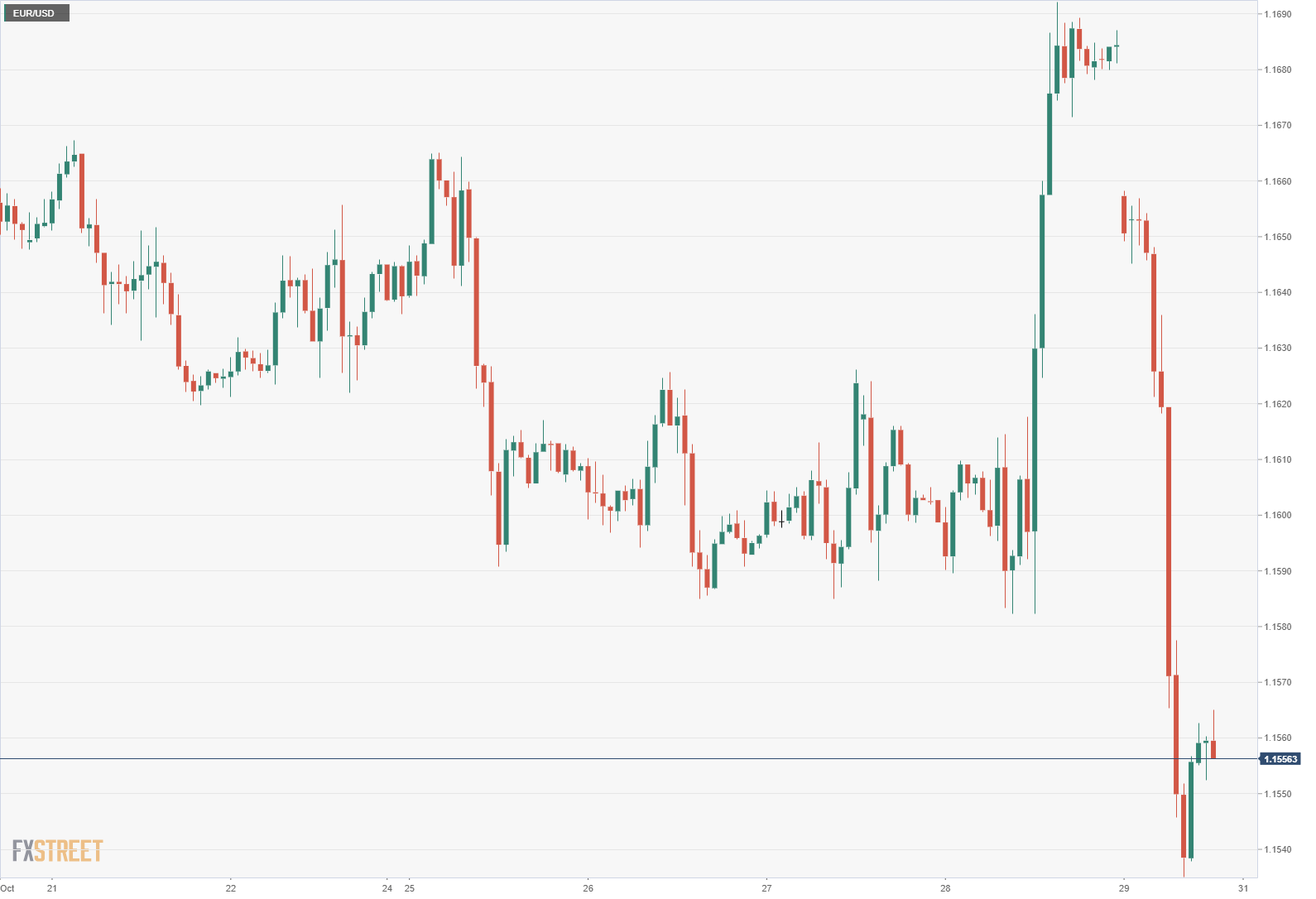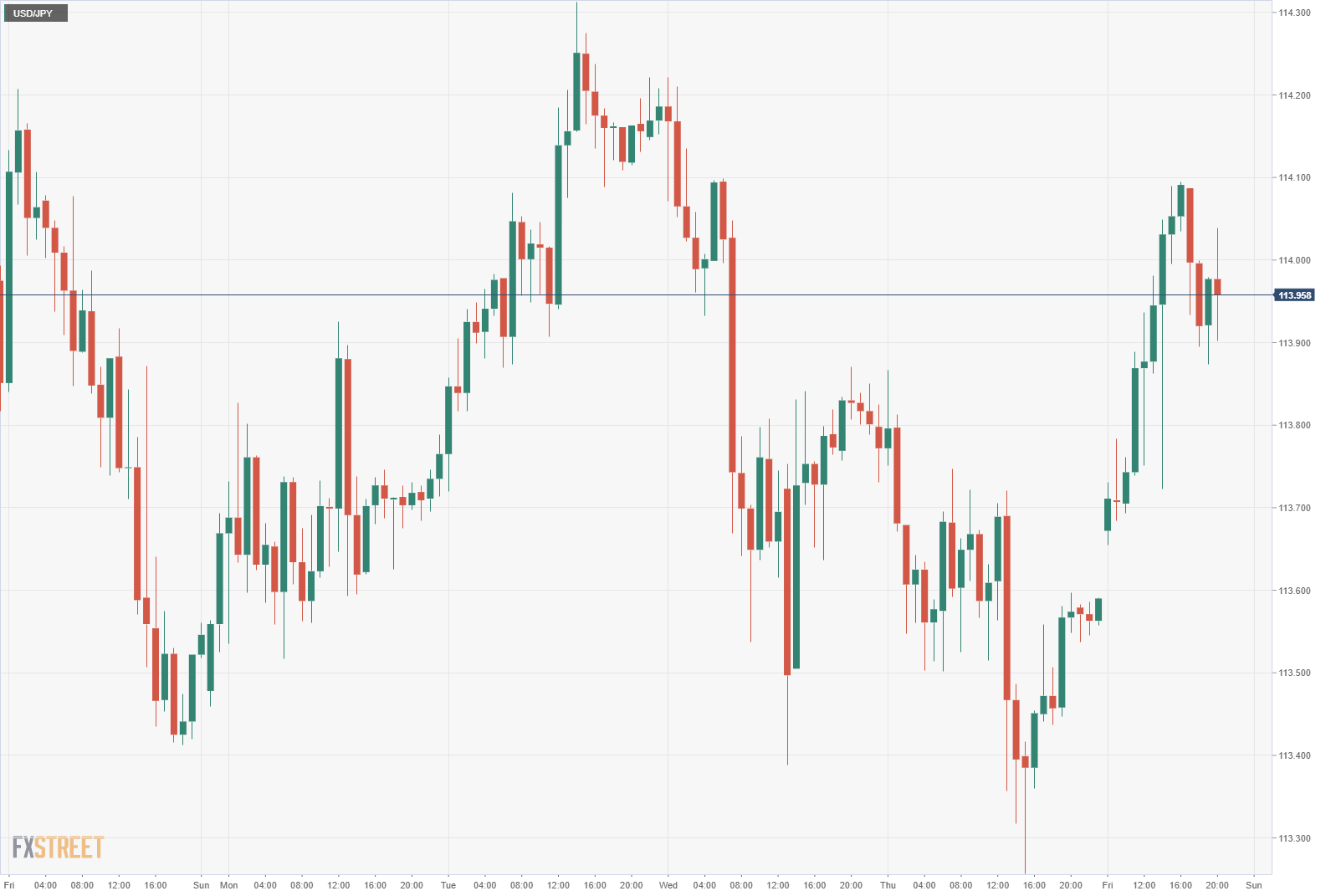- Overall PCE Price Index rises at 4.4%, the fastest since 1991.
- Core PCE Prices climb 3.6% as in August, also a generational high.
- Second quarter GDP plunges to 2% from 6.7%, employee costs rise.
- Federal Reserve bond taper may be enabled by rising inflation.
American consumer prices rose at their fastest pace in three decades in September, boosted by rapid gains in energy and food costs.
The Personal Consumption Expenditure Prices Index (PCE) jumped 0.3% last month, bringing the annual increase to 4.4% from 4.2% in August, reported the Commerce Department on Friday. This was the fastest rate of price increases since January 1991.
PCE Price Index
Core PCE inflation, the Federal Reserve’s preferred measure, which eliminates energy and food costs, rose 0.2% on the month and 3.6% for the year. This was the quickest pace of price gains since May 1991.
Overall PCE inflation has been propelled by sharply escalating energy and food prices, up 24.9% and 4.1% respectively in the past 12 months.
The sustained jump in consumer inflation has coincided with a steep drop in economic growth. Gross Domestic Product (GDP) for the third quarter, reported on Thursday by the Bureau of Economic Analysis, came in at just 2% on an annualized basis, missing the 2.7% forecast and far below the 6.7% pace in the second quarter.
GDP
FXStreet
The Employment Cost Index, which gauges worker compensation changes, climbed 1.3% in the third quarter, bringing the annual gain to 3.6%, for the fastest increase since the second quarter of 2002.
Personal Income, a measure of household earnings that includes dividends, interest and transfer payments, fell 1% in September much more than the -0.2% consensus estimate. Personal Spending rose 0.6%, near the 0.5% forecast.
Market response
US Treasury yields were slightly lower on the day with the 10-year losing less than a point to 1.561% and the 30-year shedding a little over 2 basis points to 1.939%.
US Treasury rates
CNBC
Equity movement was also limited with the Dow adding 89.08 points, 0.25% to 35,819.50. The S&P 500 rose 8.96 points, 0.19% to 4,605.38.
Currencies were the exception. The dollar saw sharp gains as the London FX market headed to its close at noon New York time. The EUR/USD lost more than a figure, opening at 1.1682 and finishing at 1.1556 in New York.
Sterling fell from 1.3789 to 1.3665 and the USD/JPY added 40 points to 113.98.
Conclusion
Although the Federal Reserve has made its intention to announce a reduction in its bond purchase program at Wednesday’s Federal Open Market Committee (FOMC) meeting about as clear as possible, the amount of the cut and the schedule are undetermined.
The central bank is currently buying $120 billion a month of Treasuries and mortgage backed securities. Some portion of that monthly purchase will be eliminated before the end of the year, with $15 bllion a proposed figure.
Although the FOMC has officially discounted inflation as an immediate rate motive with its averaging policy, officials have acknowledged that price increases are likely to be with the economy for some time. The Fed has not completely disavowed the transitory base-effect narrative, but inflation has become a very obvious policy problem.
What better way to defuse critics than to reduce bond purchases by more than anticipated, start them sooner and let the Treasury market and the dollar take on some of the inflation fighting role?
Information on these pages contains forward-looking statements that involve risks and uncertainties. Markets and instruments profiled on this page are for informational purposes only and should not in any way come across as a recommendation to buy or sell in these assets. You should do your own thorough research before making any investment decisions. FXStreet does not in any way guarantee that this information is free from mistakes, errors, or material misstatements. It also does not guarantee that this information is of a timely nature. Investing in Open Markets involves a great deal of risk, including the loss of all or a portion of your investment, as well as emotional distress. All risks, losses and costs associated with investing, including total loss of principal, are your responsibility. The views and opinions expressed in this article are those of the authors and do not necessarily reflect the official policy or position of FXStreet nor its advertisers. The author will not be held responsible for information that is found at the end of links posted on this page.
If not otherwise explicitly mentioned in the body of the article, at the time of writing, the author has no position in any stock mentioned in this article and no business relationship with any company mentioned. The author has not received compensation for writing this article, other than from FXStreet.
FXStreet and the author do not provide personalized recommendations. The author makes no representations as to the accuracy, completeness, or suitability of this information. FXStreet and the author will not be liable for any errors, omissions or any losses, injuries or damages arising from this information and its display or use. Errors and omissions excepted.
The author and FXStreet are not registered investment advisors and nothing in this article is intended to be investment advice.
Recommended Content
Editors’ Picks

EUR/USD holds above 1.0400 in quiet trading
EUR/USD trades in positive territory above 1.0400 in the American session on Friday. The absence of fundamental drivers and thin trading conditions on the holiday-shortened week make it difficult for the pair to gather directional momentum.

GBP/USD recovers above 1.2550 following earlier decline
GBP/USD regains its traction and trades above 1.2550 after declining toward 1.2500 earlier in the day. Nevertheless, the cautious market mood limits the pair's upside as trading volumes remain low following the Christmas break.

Gold declines below $2,620, erases weekly gains
Gold edges lower in the second half of the day and trades below $2,620, looking to end the week marginally lower. Although the cautious market mood helps XAU/USD hold its ground, growing expectations for a less-dovish Fed policy outlook caps the pair's upside.

Bitcoin misses Santa rally even as on-chain metrics show signs of price recovery
Bitcoin (BTC) price hovers around $97,000 on Friday, erasing most of the gains from earlier this week, as the largest cryptocurrency missed the so-called Santa Claus rally, the increase in prices prior to and immediately following Christmas Day.

2025 outlook: What is next for developed economies and currencies?
As the door closes in 2024, and while the year feels like it has passed in the blink of an eye, a lot has happened. If I had to summarise it all in four words, it would be: ‘a year of surprises’.

Best Forex Brokers with Low Spreads
VERIFIED Low spreads are crucial for reducing trading costs. Explore top Forex brokers offering competitive spreads and high leverage. Compare options for EUR/USD, GBP/USD, USD/JPY, and Gold.




